Color temperature
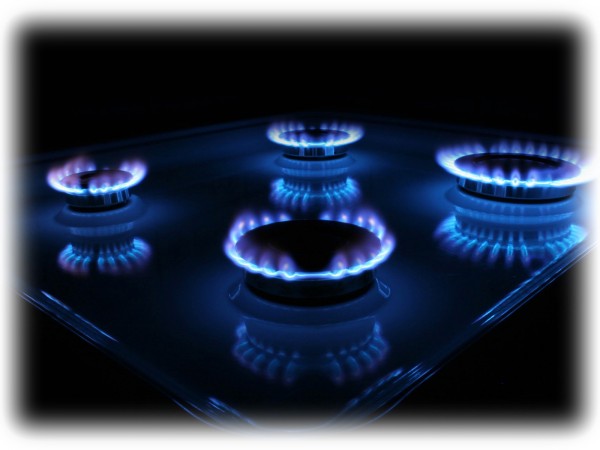
According to our psychological sensations, colors are warm and hot, they are cold and very cold. In fact, all colors are hot, very hot, because each color has its own temperature and it is very high.
Emitting heat
Any object in the world around us has a temperature above absolute zero, which means it emits thermal radiation. Even ice, which has a negative temperature, is a source of thermal radiation. It's hard to believe, but true. In nature, the temperature -89 ° C is not the lowest, it is possible to achieve even lower temperatures, however, so far, in laboratory conditions. The lowest temperature, which is currently theoretically possible within our universe, is the temperature of absolute zero and is equal to -273.15 ° C. At this temperature, the movement of the molecules of the substance stops and the body completely ceases to emit any radiation (thermal, ultraviolet, and even more visible). Total darkness, no life, no heat. Perhaps one of you knows that the color temperature is measured in Kelvin. Whoever bought energy saving bulbs for himself, he saw an inscription on the packaging: 2700K or 3500K or 4500K. This is precisely the color temperature of the light emitted by the light bulb. But why is it measured in Kelvin, and what does Kelvin mean? This unit of measure was proposed in 1848. Ulyami Thomson (aka Lord Kelvin) and officially approved in the International System of Units. In physics and sciences that are directly related to physics, thermodynamic temperature is measured just by Kelvin. The beginning of the temperature scale report starts at point 0 Kelvin , which means -273.15 degrees Celsius . That is, 0K - this is the absolute zero temperature . You can easily convert the temperature from Celsius to Kelvin. To do this, simply add the number 273. For example, 0 ° C is 273K, then 1 ° C is 274K, by analogy, the temperature of a human body is 36.6 ° C is 36.6 + 273.15 = 309.75K. That's how it all just happens.
Blacker than black
How does it all start? It all starts from scratch, including light emission. Black is the absence of light at all. From the point of view of color, black is 0 radiation intensity, 0 saturation, 0 color tone (it simply does not exist), this is the complete absence of all colors in general. Why we see the object black, but because it almost completely absorbs all the light falling on it. There is such a thing as an absolutely black body . An absolutely black body is an idealized object, which absorbs all radiation falling on it and does not reflect anything. Of course, in reality this is unattainable and there are no absolutely black bodies in nature. Even those items that appear black to us are not really completely black. But you can make a model of almost that absolutely black body. The model is a cube with a hollow structure inside, a small hole is made in the cube through which light rays penetrate into the cube. The design is something like a birdhouse. Look at Figure 1.

Figure 1 - Model of a completely black body.
')
The light that enters through the hole will be completely absorbed after multiple reflections, and the hole from the outside will look completely black. Even if we paint the cube black, the hole will be blacker than the black cube. This hole will be a completely black body . In the literal sense of the word, the hole is not a body, but only visually demonstrates to us an absolutely black body.
All objects have thermal radiation (as long as their temperature is above absolute zero, that is, -273.15 degrees Celsius), but not a single object is an ideal thermal radiator. Some objects radiate heat better, others worse, and all this depending on various environmental conditions. Therefore, a black body model is applied. Absolutely black body is an ideal thermal radiator . We can even see the color of an absolutely black body, if it is heated, and the color that we see will depend on the temperature to which we heat the absolutely black body. We came close to such a concept as color temperature. See Figure 2.

Figure 2 - The color of the black body, depending on the heating temperature.
a) There is an absolutely black body, we do not see it at all. Temperature 0 Kelvin (-273.15 degrees Celsius) - absolute zero, the complete absence of any radiation.
b) We turn on the "super-powerful flame" and begin to heat our absolutely black body. Body temperature, through heating, increased to 273K.
c) A little more time passed and we already see the faint red glow of an absolutely black body. The temperature increased to 800K (527 ° C).
d) The temperature has risen to 1300K (1027 ° C), the body has acquired a bright red color. You can see the same glow color when heating some metals.
e) The body is heated to 2000K (1727 ° C), which corresponds to an orange glow. The same color have hot coals in the fire, some metals when heated, a candle flame.
e) The temperature is already 2500K (2227 ° C). The glow of this temperature becomes yellow. To touch such a body is extremely dangerous!
g) White color - 5500K (5227 ° C), the same color of the glow at the Sun at noon.
h) Blue color of a luminescence - 9000K (8727 ° ). Such a temperature by heating the flame to get in reality will be impossible. But such a temperature threshold is quite achievable in thermonuclear reactors, atomic explosions, and the temperature of stars in the universe can reach tens and hundreds of thousands of Kelvin. We can only see the same blue hue of light, for example, from LED lights, sky lights or other light sources. The color of the sky in clear weather is about the same color. Summarizing all the above, we can give a clear definition of color temperature. Color temperature is the temperature of a black body, at which it emits radiation of the same color tone as the radiation in question. Simply put, a temperature of 5000K is a color that a completely black body acquires when it is heated to 5000K. The color temperature of the orange color is 2000K, which means that an absolutely black body needs to be heated to a temperature of 2000K so that it acquires an orange glow color.
But the color of the glow of a hot body does not always correspond to its temperature. If the flame of a gas stove in the kitchen is blue-blue, this does not mean that the temperature of the flame is over 9000K (8727 ° ). The molten iron in the liquid state has an orange-yellow color, which in reality corresponds to its temperature, which is approximately 2000K (1727 ° C).
Color and its temperature
To imagine how this looks in real life, consider the color temperature of some sources: xenon car lamps in Figure 3 and fluorescent lamps in Figure 4.
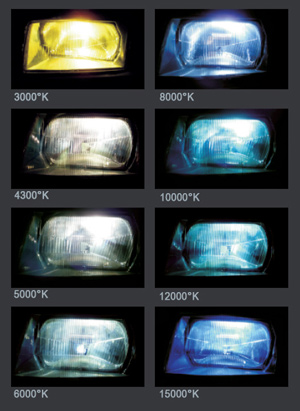
Figure 3 - Color temperature of xenon car lamps.
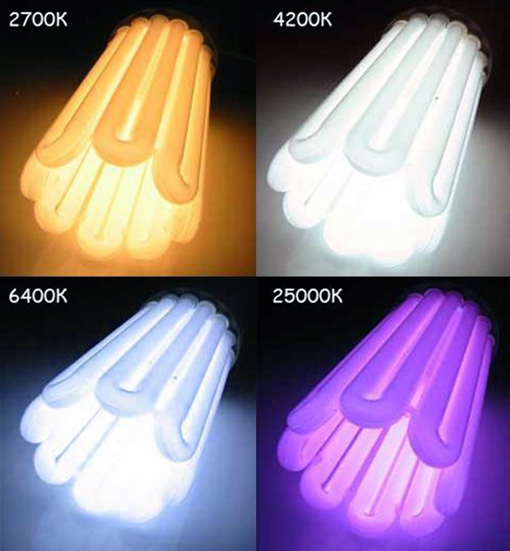
Figure 4 - The color temperature of fluorescent lamps.
In Wikipedia, I found the numerical values of the color temperatures of common light sources:
800 K - the beginning of the visible dark red glow of hot bodies;
1500-2000 K - the light of the flame of a candle;
2200 K - incandescent lamp 40 W;
2800 K - incandescent lamp 100 W (vacuum lamp);
3000 K - incandescent lamp 200 W, halogen lamp;
3200–3250 K - typical movie lamps;
3400 K - the sun at the horizon;
4200 K - fluorescent lamp (warm white light);
4300–4500 K - morning sun and sun at lunchtime;
4500-5000 K - xenon arc lamp, electric arc;
5000 K - the sun at noon;
5500—5600 K - photo flash;
5600-7000 K - fluorescent lamp;
6200 K - close to daylight;
6500 K is a standard source of daytime white light, close to noon sunlight, 6500–7500 K is cloudy;
7500 K - daylight, with a large share scattered from the clear blue sky;
7500–8500 K - twilight;
9500 K - blue cloudless sky on the north side before sunrise;
10,000 K — light source with “infinite temperature” used in reef aquariums (actinium shade of blue);
15 000 K - a clear blue sky in the winter;
20 000 K - blue sky in the polar latitudes.
Color temperature is a characteristic of the light source . Any color we see is color temperature and no matter what color it is: red, crimson, yellow, magenta, violet, green, white.
The works in the study of thermal radiation of blackbody belong to the founder of quantum physics, Max Planck. In 1931, at the VIII session of the International Commission on Illumination (ICE, often written in literature as CIE), the XYZ color model was proposed. This model is a color chart. The XYZ model is presented in Figure 5.
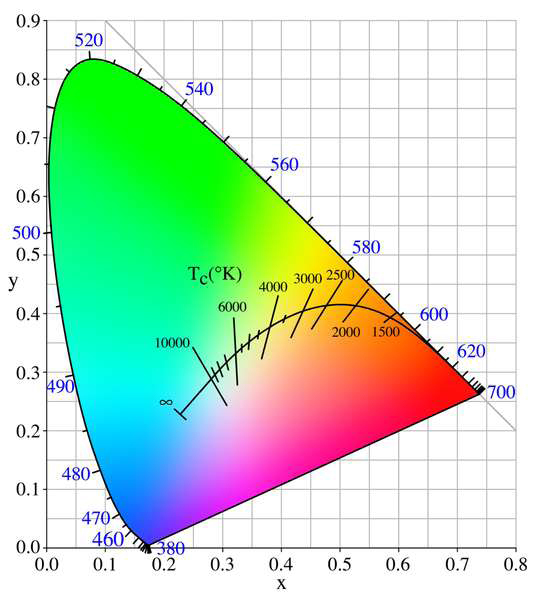
Figure 5 - XYZ color chart.
The numeric values X and Y determine the color coordinates in the chart. The Z coordinate determines the brightness of the color, it is not involved in this case, since the diagram is presented in a two-dimensional form. But the most interesting thing in this figure is the Planck curve, which characterizes the color temperature of the colors in the diagram. Consider it closer to Figure 6.

Figure 6 - Planck's Curve
The Planck curve in this figure is slightly truncated and “slightly” upturned, but you can ignore this. To find out the color temperature of any color, you just need to continue the perpendicular line to the point (the color section) you are interested in. The line of the perpendicular, in turn, characterizes such a thing as displacement - the degree of color deviation in green or magenta. Those who worked with RAW-converters, know such a parameter as Tint (Shade) - this is the offset. Figure 7 displays the color temperature setting panel in RAW converters such as Nikon Capture NX and Adobe CameraRAW.
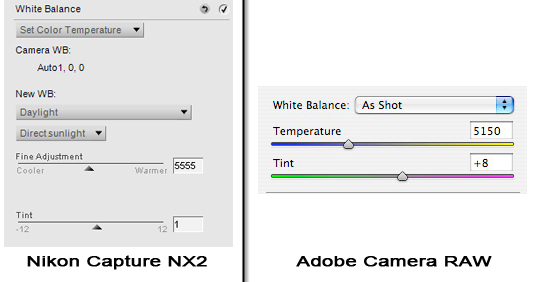
Figure 7- Color temperature setting panel for various converters.
It's time to see how the color temperature is determined not just for a single color, but for the entire photograph. Take, for example, a rural landscape on a clear sunny afternoon. Who has practical experience in photography, knows that the color temperature at sunny noon is about 5500K. But few know where this figure came from. 5500K is the color temperature of the entire scene , that is, the entire image under consideration (pictures, surrounding space, surface area). Naturally, the image consists of individual colors, and each color has its own color temperature. What happens: blue sky (12000K), foliage of trees in the shade (6000K), grass in the meadow (2000K), various kinds of vegetation (3200K - 4200K). As a result, the color temperature of the entire image will be equal to the average value of all these areas, i.e. 5500K. Figure 8 demonstrates this.
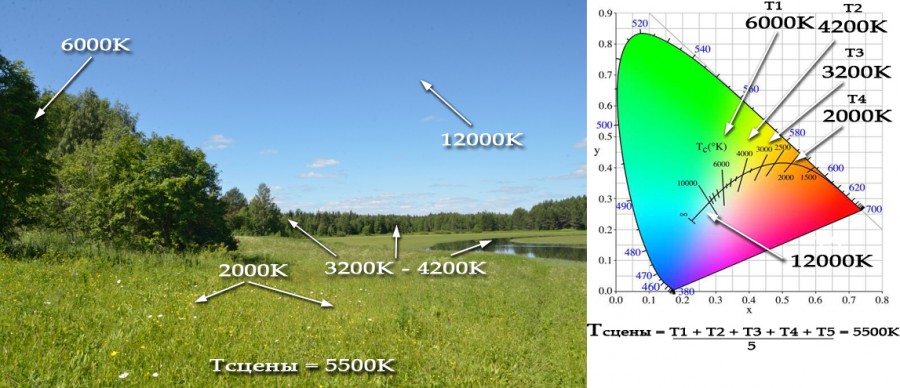
Figure 8 - Calculation of the color temperature of the scene taken on a sunny day.
The following example illustrates Figure 9.
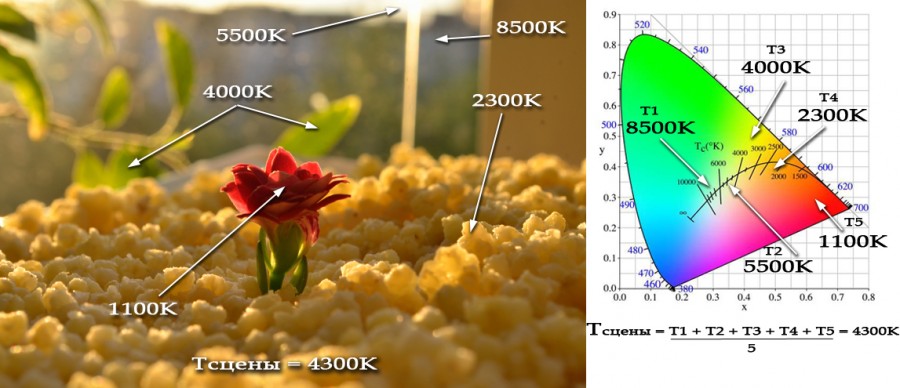
Figure 9 - Calculation of the color temperature of a scene taken at sunset.
The picture shows a red flower bud, which seems to grow from wheat cereal. The picture was taken in the summer at 10:30 pm, when the sun was setting at sunset. This image is dominated by a large number of colors of yellow and orange color tone, although in the background there is a blue tint with a color temperature of about 8500K, there is also an almost pure white color with a temperature of 5500K. I took only 5 of the most basic colors in this image, compared them with a chromaticity diagram, and calculated the average color temperature of the entire scene. This, of course, approximately, but true. In total, this image contains 272816 colors and each color has its own color temperature, if we calculate the average for all colors manually, then in a couple of months we will be able to get a value that is even more accurate than I calculated. And you can write a program to calculate and get an answer much faster. Go ahead: Figure 10.
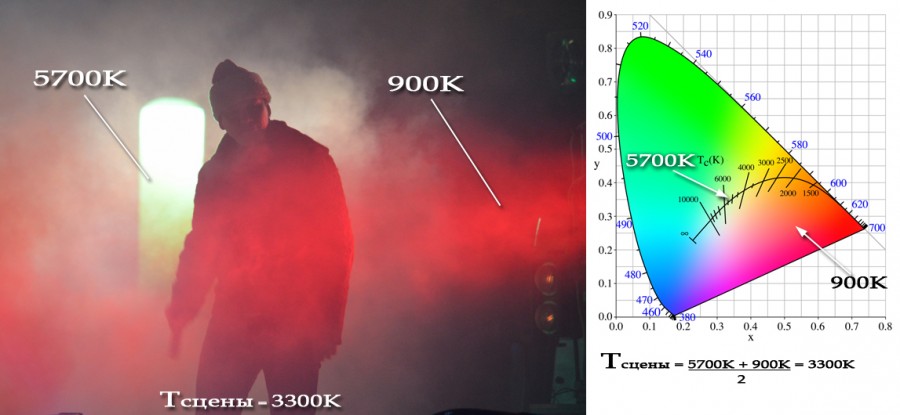
Figure 10 - Calculation of the color temperature of other light sources
The presenters of the show decided not to load us with color temperature calculations and made only two sources of illumination: a searchlight emitting white-green bright light and a searchlight that shines red, and the whole thing was diluted with smoke .... bring to Front. The smoke is transparent, so it easily passes the red light of the searchlight and becomes red itself, and the temperature of our red color, according to the diagram, is 900K. The temperature of the second projector - 5700K. The average between them is 3300K. The remaining parts of the image can be disregarded - they are almost black, and such a color does not even fall on the Planck curve in the diagram, because the visible radiation from the hot bodies starts from about 800K (red). Theoretically, one can assume and even calculate the temperature for dark colors, but its value will be negligible compared to the same 5700K.
And the last image in Figure 11.
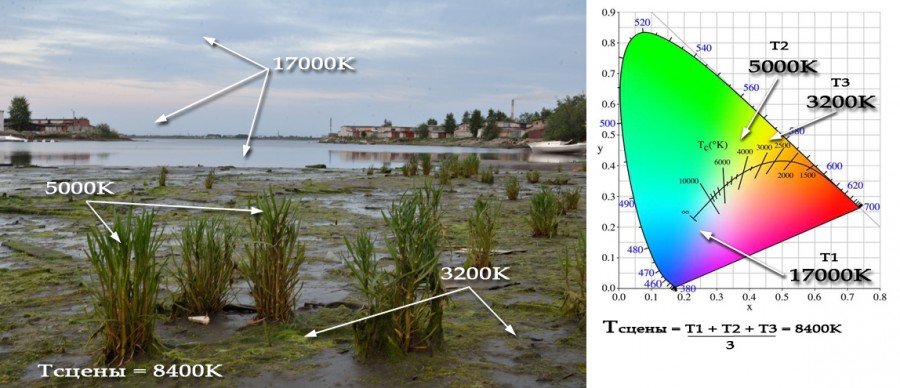
Figure 11 - Calculation of the color temperature of the scene taken in the evening.
The picture was taken on a summer evening after sunset. The color temperature of the sky is located in the region of the blue color tone on the diagram, which, according to the Planck curve, corresponds to a temperature of approximately 17000K. Coastal green vegetation has a color temperature of about 5000K, and sand with algae has a color temperature of about 3200K. The average value of all these temperatures is about 8400K.
White balance
The white balance settings are especially familiar to amateurs and professionals involved in video and photography. In the menu of each, even the simplest soap box camera, it is possible to configure this parameter. The white balance adjustment mode icons look something like Figure 12.

Figure 12 - White balance adjustment modes in the camera (camcorder).
Immediately it should be said that the white color of objects can be obtained by using a light source with a color temperature of 5500K (this may be sunlight, a photo flash, other artificial illuminators) and if the objects themselves are white (reflect all the radiation of visible light). In other cases, the white color can only be close to white. Look at Figure 13. It shows the very same XYZ chromaticity diagram that we have recently reviewed, and in the center of the diagram a white dot is marked with a cross.
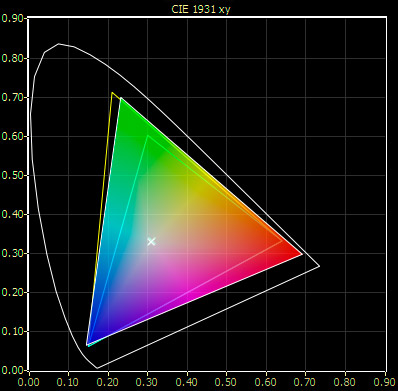
Figure 13 - White dot.
The marked point has a color temperature of 5500K and as a true white color - it is the sum of all the colors of the spectrum. Its coordinates are x = 0.33 and y = 0.33. This point is called the point of equal energies . White dot. Naturally, if the color temperature of the light source is 2700K, the white point is not worth it here, what white color can we talk about? There will never be white flowers! White in this case can only be highlights. An example of such a case is shown in Figure 14.

Figure 14 - Different color temperature.
White balance is the setting of the color temperature value for the entire image. When properly installed, you will receive the colors corresponding to the image that you see. If the resulting image is dominated by unnatural blue and blue color tones, it means that the colors are “not heated enough”, the color temperature of the scene is set too low, it is necessary to raise it. If the red tone prevails on the whole picture - the colors are “overheated”, the temperature is set too high, it is necessary to lower it. An example of this is Figure 15.

Figure 15 - Example of correct and incorrect setting of color temperature
The color temperature of the entire scene is calculated as the average temperature of all the colors in this image, so in case of mixed light sources or colors that differ greatly in color tone, the camera calculates the average temperature, which is not always true.
An example of one such incorrect calculation is shown in Figure 16.

Figure 16 - Unavoidable inaccuracy in the installation of color temperature
The camera is not able to perceive the sharply differing brightness of individual elements of the image and their color temperature as well as human vision. Therefore, to make the image almost the same as you saw during the shooting, you will have to adjust it manually according to your visual perception.
This article is more intended for those who are not familiar enough with the concept of color temperature and would like to know more. The article does not contain complex mathematical formulas and precise definitions of certain physical terms. Thanks to your comments that you wrote in the comments, I made minor amendments to some paragraphs of the article. I apologize for any inaccuracies.
Source: https://habr.com/ru/post/193142/
All Articles